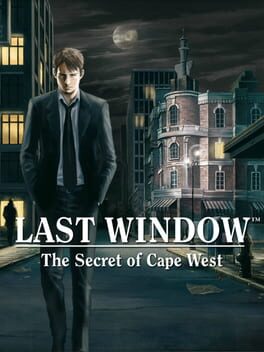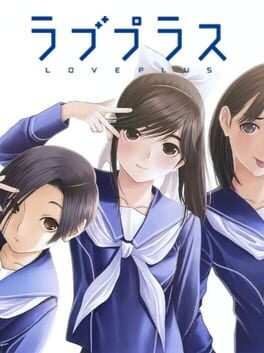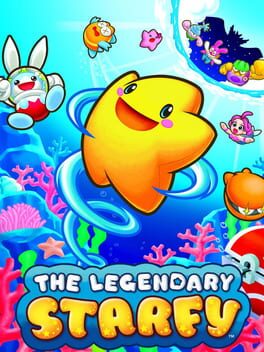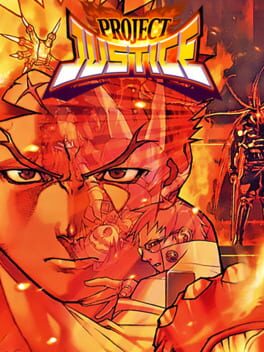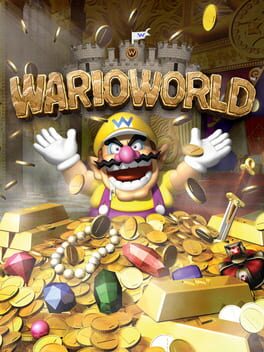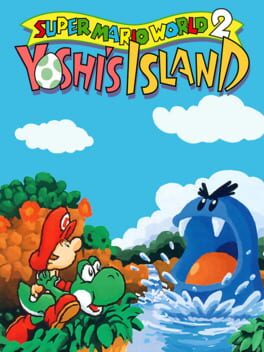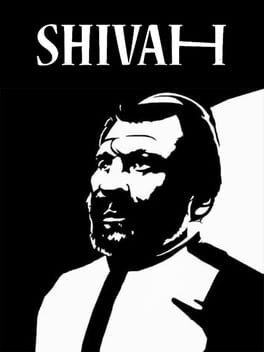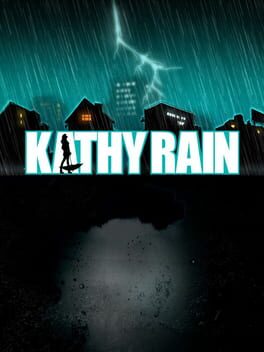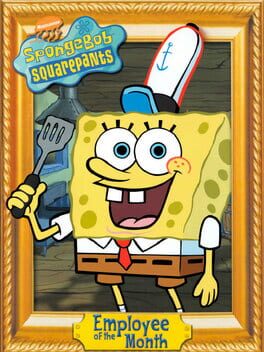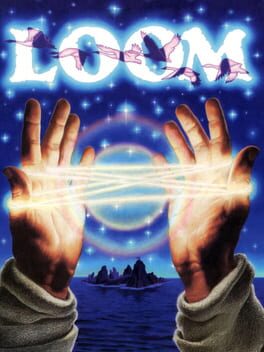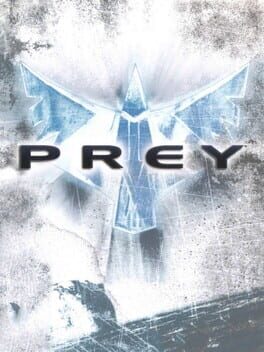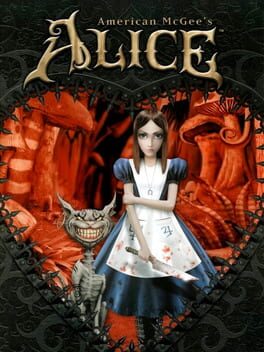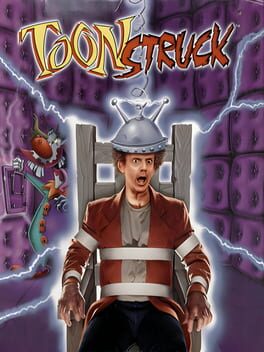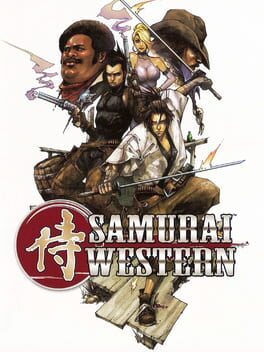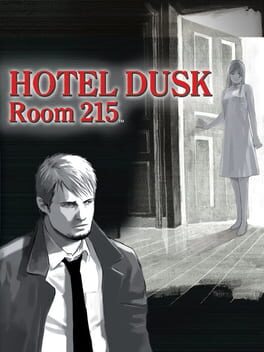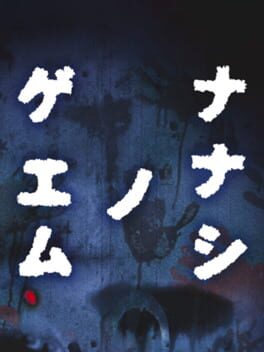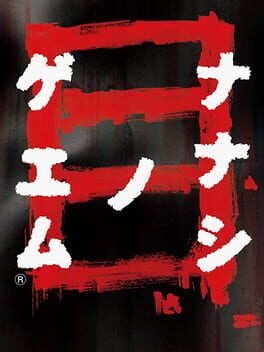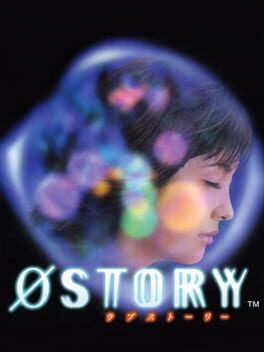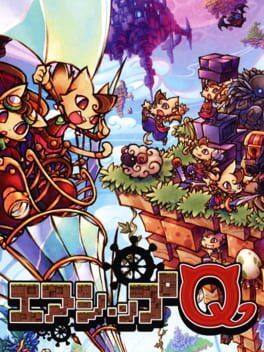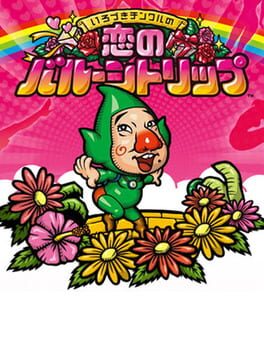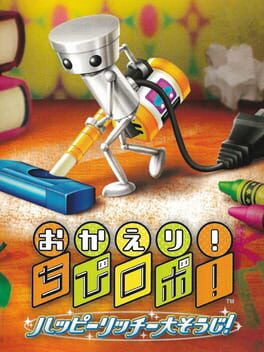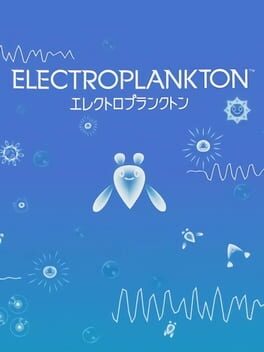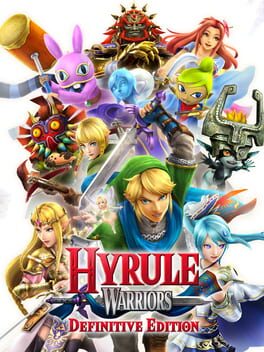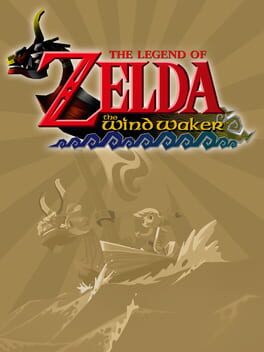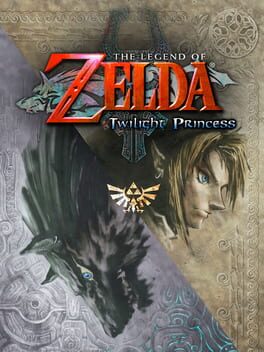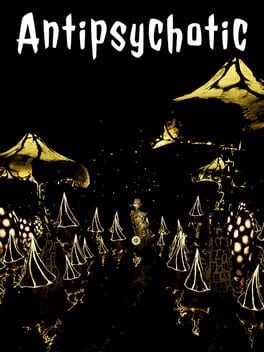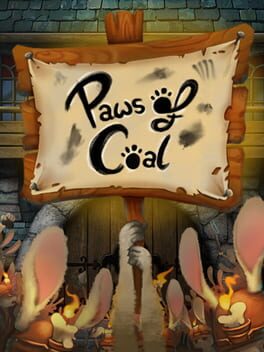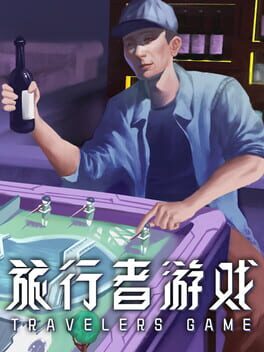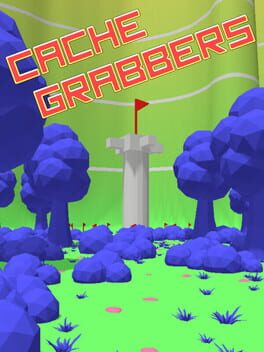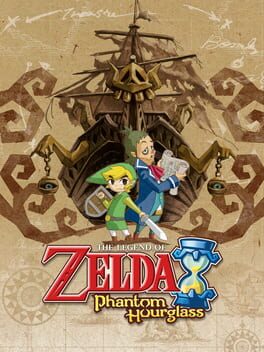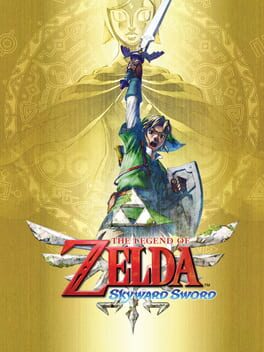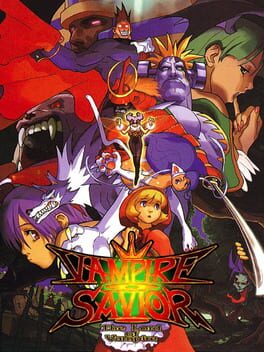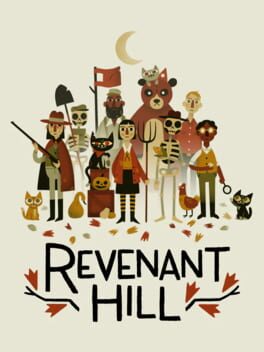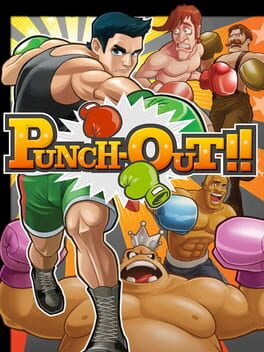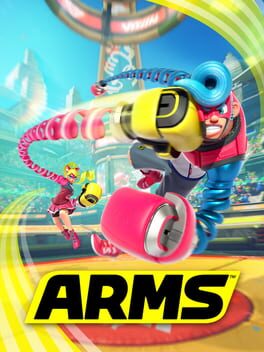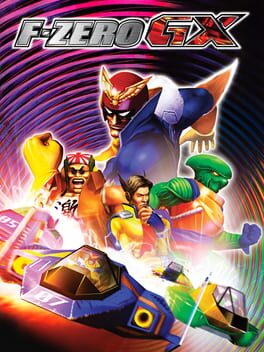DizzySkullKid19
476 reviews liked by DizzySkullKid19
Hotel Dusk will always have more personal significance as it was first and because of when it came out but this has been growing in my favor with each playthrough.
wonderful contained setting and cast of characters that ends up feeling larger than the first due to the stakes involved. the music is once again absolutely incredible with this possibly taking the crown for my favorite of the two.
hopefully the Another Code remakes did well enough for the Kyle Hyde saga to see something too.
wonderful contained setting and cast of characters that ends up feeling larger than the first due to the stakes involved. the music is once again absolutely incredible with this possibly taking the crown for my favorite of the two.
hopefully the Another Code remakes did well enough for the Kyle Hyde saga to see something too.
This review will be talking about both Hotel Dusk and Last Window as what makes them such great titles are shared between both of them.
These titles are some of the most grounded and personal works I have ever had the pleasure of going through. By personal, I do not mean something that relates to me specifically, but rather that the ideas and stories of these titles are something applicable to all of our real lives.
In both games there is this mystery that has plagued Kyle Hyde for several years, or even most of his life. Hotel Dusk and Last Window take place late in December of the years 1979 and 1980, respectively and there’s this very unique sense of urgency to solve these cases before the new year begins. At the end of every year, we look back on it, at all of it’s victories and failures, then we hope for a better future, and there’s also a sense to wrap everything from the the year up. These games manifest that sense of urgency into reality. In Hotel Dusk, everyone related to the case you’re investigating is in the same area but wait just one day and at least one will certainly leave and the puzzle will be left unfinished forever. In Last Window, the location of the case you’re investigating this time is going to be demolished in just two weeks, so you must solve the mystery before then and of course before the new year begins.
This very human concept of moving on from the past and the games general realistic setting is backed up by it’s lovable cast. Most of the characters relate to these themes, having these mysteries that have plagued them with expiry dates on the solution, and as you solve the mysteries of these side characters you slowly solve bits and parts of your own. Adding to the realistic feel of the games is the dialogue and character art. The dialogue and writing flows extremely well and naturally, it really does feel like these characters are actual people and the brilliant animations and movements done through rotoscoping makes these characters feel alive all the more.
The music is another aspect adding to this with less technological instruments and rather much more tangible ones befitting of games taking place in the late 70s and early 80s such as saxophones, pianos, drums, and the like.
All in all thoroughly enjoyable titles, I probably could’ve written a better review but it’s 12:30 am, I’m tired, but I also wanted to get my love for these games out there and did not want to wait until the morning!!
obligatory RIP Cing
These titles are some of the most grounded and personal works I have ever had the pleasure of going through. By personal, I do not mean something that relates to me specifically, but rather that the ideas and stories of these titles are something applicable to all of our real lives.
In both games there is this mystery that has plagued Kyle Hyde for several years, or even most of his life. Hotel Dusk and Last Window take place late in December of the years 1979 and 1980, respectively and there’s this very unique sense of urgency to solve these cases before the new year begins. At the end of every year, we look back on it, at all of it’s victories and failures, then we hope for a better future, and there’s also a sense to wrap everything from the the year up. These games manifest that sense of urgency into reality. In Hotel Dusk, everyone related to the case you’re investigating is in the same area but wait just one day and at least one will certainly leave and the puzzle will be left unfinished forever. In Last Window, the location of the case you’re investigating this time is going to be demolished in just two weeks, so you must solve the mystery before then and of course before the new year begins.
This very human concept of moving on from the past and the games general realistic setting is backed up by it’s lovable cast. Most of the characters relate to these themes, having these mysteries that have plagued them with expiry dates on the solution, and as you solve the mysteries of these side characters you slowly solve bits and parts of your own. Adding to the realistic feel of the games is the dialogue and character art. The dialogue and writing flows extremely well and naturally, it really does feel like these characters are actual people and the brilliant animations and movements done through rotoscoping makes these characters feel alive all the more.
The music is another aspect adding to this with less technological instruments and rather much more tangible ones befitting of games taking place in the late 70s and early 80s such as saxophones, pianos, drums, and the like.
All in all thoroughly enjoyable titles, I probably could’ve written a better review but it’s 12:30 am, I’m tired, but I also wanted to get my love for these games out there and did not want to wait until the morning!!
obligatory RIP Cing
LovePlus
2009
The Legendary Starfy
2008
Project Justice
2000
Giftpia
2003
Hey it's astoundingly obscure and good go play it.
Not many people in the world have even heard of Giftpia. It's a the first game from the Chibi-Robo devs and it makes me regret ever describing something as a fever dream, because this is as about as fever-dream-y as it can get. Not the kind of fever dream where reality is completely broken down, but the more subtle kind where things are off, and the unconscious mind is unable to parse what that is exactly.
Everyone is animated like wet noodles. They talk like broken wind-up toys. They make odd noises and their psychobabble language is filtered with a variety of effects like someone just discovered audio software for the first time. It's fucking cool, actually.
This game is a barely sensical, earnest slapstick comedy where your character does one goofy thing after the next just to keep the roller coaster ride going. You will almost at all times ask yourself "why am I doing any of this". Just go with it. The surreal nonsense is the ride.
Giftpia is a gift in of itself. It's a palette-cleansing good time. A reminder that Nintendo of Japan just let whatever on the Gamecube so long as it never came out in English ever, ever.
I genuinely do think this game and Captain Rainbow should be remembered more, but accessing English translations is a little rough for the normies and the translation job is not 100% done (it's 95% done they just gave up at the end)
Listen, I love this game. I don't like obscure video games hardly anyone has played being some of my favorite things ever. I'm the second review of this game on this website for fuck's sake. I need others to play this game. Maybe it'll hit you like it has hit for so precious few. Giftpia's got soul. Even if I want to beat the shit out of the robot every time I see him.
Not many people in the world have even heard of Giftpia. It's a the first game from the Chibi-Robo devs and it makes me regret ever describing something as a fever dream, because this is as about as fever-dream-y as it can get. Not the kind of fever dream where reality is completely broken down, but the more subtle kind where things are off, and the unconscious mind is unable to parse what that is exactly.
Everyone is animated like wet noodles. They talk like broken wind-up toys. They make odd noises and their psychobabble language is filtered with a variety of effects like someone just discovered audio software for the first time. It's fucking cool, actually.
This game is a barely sensical, earnest slapstick comedy where your character does one goofy thing after the next just to keep the roller coaster ride going. You will almost at all times ask yourself "why am I doing any of this". Just go with it. The surreal nonsense is the ride.
Giftpia is a gift in of itself. It's a palette-cleansing good time. A reminder that Nintendo of Japan just let whatever on the Gamecube so long as it never came out in English ever, ever.
I genuinely do think this game and Captain Rainbow should be remembered more, but accessing English translations is a little rough for the normies and the translation job is not 100% done (it's 95% done they just gave up at the end)
Listen, I love this game. I don't like obscure video games hardly anyone has played being some of my favorite things ever. I'm the second review of this game on this website for fuck's sake. I need others to play this game. Maybe it'll hit you like it has hit for so precious few. Giftpia's got soul. Even if I want to beat the shit out of the robot every time I see him.
Wario World
2003
This game feels like if they made a Mario Party 4 minigame a full game.
And I love Mario Party 4 so that's fine by me.
I had vague memories of play this game as a kid. I remember the circus level, pyramid level, and slopes level, and I remember having a really hard time with Red Brief J. I was pretty surprised to learn that I had almost beaten this game as a kid even though I only played it maybe once at my grandparents' house? Maybe it was more than once.
Anyhow, this game is pretty damn easy and not super interesting in either of its genres - 3D platformer and beat 'em up. The combat is super simple, enemies offer virtually no lethality the majority of the time, and frankly I just avoided them most of the time in the second half since they're just boring. The only way to die in this game is by getting hit enough times, falling into pits takes you to a zone where you have to break boxes to find an exit and any damage you take there will just take away money (money which you only use to buy health, yipee). The fun of this game is pretty much entirely in exploration and bosses. there are a whole bunch of collectibles in each level. Most of them are pretty easy to find, but there are challenge rooms that have you solve some kind of puzzle or complete a platforming challenge and they're the most fun part of the game. That said, they are also pretty easy most of the time. The very last level had some challenging ones (and one puzzle that I don't know how you're supposed to do, I just cheesed it a bit).
Every level has a unique boss, and each world ends in another unique boss - there's actually more bosses in this game than levels. Honestly, they don't take much to figure out how to beat, but I appreciate making each boss special, and there are some wicked designs here. A marionette cherub, a medusa with a blue stone-cold face, a bigass spider, etc. They're overall very interestingly designed, and most of them are fun to fight even if they aren't difficult. I'd say the final boss is actually the worst one since you just run around a circle and hit crystals for eight or so cycles and its attacks are predictable and easy, it was a disappointing end to the game. All in all, the designs in Wario World are cool.
This might be the best-animated 3D Wario to date, he's very expressive, and mixing that with his iconic voice lines makes this Wario actually decently stylized. The music is jamming, and the vibes are great. I definitely wouldn't call this a GameCube must-play, but it's still a good time, I don't think most people would regret playing it.
And I love Mario Party 4 so that's fine by me.
I had vague memories of play this game as a kid. I remember the circus level, pyramid level, and slopes level, and I remember having a really hard time with Red Brief J. I was pretty surprised to learn that I had almost beaten this game as a kid even though I only played it maybe once at my grandparents' house? Maybe it was more than once.
Anyhow, this game is pretty damn easy and not super interesting in either of its genres - 3D platformer and beat 'em up. The combat is super simple, enemies offer virtually no lethality the majority of the time, and frankly I just avoided them most of the time in the second half since they're just boring. The only way to die in this game is by getting hit enough times, falling into pits takes you to a zone where you have to break boxes to find an exit and any damage you take there will just take away money (money which you only use to buy health, yipee). The fun of this game is pretty much entirely in exploration and bosses. there are a whole bunch of collectibles in each level. Most of them are pretty easy to find, but there are challenge rooms that have you solve some kind of puzzle or complete a platforming challenge and they're the most fun part of the game. That said, they are also pretty easy most of the time. The very last level had some challenging ones (and one puzzle that I don't know how you're supposed to do, I just cheesed it a bit).
Every level has a unique boss, and each world ends in another unique boss - there's actually more bosses in this game than levels. Honestly, they don't take much to figure out how to beat, but I appreciate making each boss special, and there are some wicked designs here. A marionette cherub, a medusa with a blue stone-cold face, a bigass spider, etc. They're overall very interestingly designed, and most of them are fun to fight even if they aren't difficult. I'd say the final boss is actually the worst one since you just run around a circle and hit crystals for eight or so cycles and its attacks are predictable and easy, it was a disappointing end to the game. All in all, the designs in Wario World are cool.
This might be the best-animated 3D Wario to date, he's very expressive, and mixing that with his iconic voice lines makes this Wario actually decently stylized. The music is jamming, and the vibes are great. I definitely wouldn't call this a GameCube must-play, but it's still a good time, I don't think most people would regret playing it.
Pikmin
2001
The secret behind Pikmin’s success was not that it somehow outclassed classic real-time strategy franchises, but rather that it was never competing with them to begin with. According to Shigeru Miyamoto, he came up with the idea for Pikmin one day when he observed a group of ants carrying leaves together into their nest. Miyamoto then imagined a game focused on cooperation rather than competition; he asked, “Why can’t everyone just move together in the same direction, carrying things as a team?” Nintendo EAD’s design philosophy went along with this line of reasoning, melding design mechanics from different genres to create an entirely new yet familiar experience. As a result, instead of competing against other players in Pikmin akin to classic RTS games, Pikmin forces players to explore and compete with the very environment itself by introducing puzzle-exploration and survival mechanics. It made sense in the end; after all, real-time strategy is concerned with minimizing time spent to get a competitive edge over opponents, and what better way to translate this than to force players to master their understanding over the terrain itself, managing and optimizing the one resource which governs them all?
Perhaps Nintendo’s greatest challenge was figuring out how to translate a genre considered by many to be niche and technical to an intuitive yet layered game, and even more so, translating classic actions from a mouse and keyboard allowing for such complexity to a suite of simplified controls using a gamepad. Coming from the other side as someone who played Starcraft as a kid and didn’t get into Pikmin until recently however, I’m surprised at how well EAD’s tackled this endeavor. Classic RTS games focus upon base-building and resource gathering through the micromanagement of units. Pikmin’s take upon this is to introduce a dichotomy between the player character Captain Olimar, who is incapable of doing anything by himself but can issue commands to the units only he can create by plucking out of the soil, and the Pikmin, who are essentially brainless but represent the units that must do everything. The player as Olimar must be present to figure out exactly how to best traverse and exploit the environment around him (replacing the base-building with management/prioritization puzzles) while the Pikmin provide bodies to construct, move, and attack the world around them. However, the Pikmin’s AI is fairly limited and as a result, Pikmin will sit around helplessly once they finish their actions and often get distracted by nearby objects while moving around, which is where the micromanagement kicks in. Therefore, the player has to decide how to best build up their supply of Pikmin to allocate tasks to surmount bottlenecks while exploring and opening the world, all while working against the limited thirty-day timer throughout the game’s five areas.
A part of me expected to really struggle with the gamepad while playing Pikmin, but the available actions on offer allow for a surprising degree of control despite the simplification. For instance, consider Olimar’s whistle; as a substitute for dragging and clicking to select units on PC, the whistle on the GameCube lets Olimar quickly rally groups of clustered units. Holding down B for longer allows the player to increase the size of the whistle’s AOE, which allows the player to better control and target how many Pikmin to rally in any cluster (hence, the analog of clicking and dragging to select boxes of units on mouse and keyboard). The Swarm command is another interesting translation. The obvious use is to allow Olimar to quickly move nearby Pikmin by directing them with the C-stick versus needing to aim and throw them by positioning and rotating Olimar himself. However, because it can be used to shift the position of Pikmin with respect to Olimar, it can also be used to swap the Pikmin on-deck for throwing (since Olimar will always throw the Pikmin closest to him) without needing to dismiss and re-rally separated Pikmin colors, and most importantly, it allows you to directly control the group of Pikmin following Olimar while moving Olimar himself. This second application allows the player to kite the Pikmin around telegraphed enemy attacks, and properly funnel them so the Pikmin aren’t getting as easily stuck behind walls or falling off ledges/bridges into hazards. That said, noticeable control limitations do exist. Olimar cannot pivot to move the reticle without changing his position with respect to the Pikmin around him, which can make aiming in place annoying if the Pikmin types you need to throw aren’t close enough to be moved next to Olimar with Swarm. Additionally, there is no way for Olimar to simultaneously and directly control multiple separated groups of Pikmin, which does make allocating tasks a bit slower. However, given that the tasks themselves usually don’t necessitate more than one Pikmin type at a time, this limitation is understandable, especially since the sequels would tackle this challenge with more expansive controls and multiple playable characters on the field.
Pikmin’s base model as a result is a fantastic translation of an abstract design philosophy, but I can’t help but wonder if the original could have been pushed further. Don’t misunderstand me: I absolutely take pride in mastering a game by learning all about its inner workings and pushing its mechanics to the limits simply by following a few intuitive genre principles. As such, I wish that the game was a bit harder in order to really force me to squeeze every bit of time from the game’s solid premise. For example, combat is often optional in Pikmin given how many full-grown Bulborbs are found sleeping, but given that most enemies don’t respawn within the next day after killing them and I can bring their carcasses back to base to more than replenish my Pikmin supply, combat is almost always in my favor, especially since certain enemies will spawn more mobs if they aren’t defeated. If circumstances existed where it would be unfavorable to engage (such as losing a significant number of Pikmin every time, or having so little time left that engaging would waste time), then I feel that this would add an additional layer of decision-making of deciding when to sneak past sleeping Bulborbs rather than just wiping out as many foes as I could as soon as possible. In a similar sense, I felt that certain design elements such as the Candypop Buds for switching Pikmin colors were a bit underutilized; outside of one environmental puzzle, I never had to use the Candypop Buds, mainly because I had so many remaining Pikmin and time to never justify their usage. I’ll concede here that Pikmin’s one-day Challenge Mode does at least provide a score attack sandbox where I’m forced to take my Pikmin stock and remaining time into higher consideration, but it’s missing the connectivity of the main story mode where my earlier actions would greatly affect how I planned later days in a run, particularly in making judgement calls on which days to spend at each site and which days I dedicate towards building up my Pikmin numbers versus hauling in ship parts. Regardless, I found myself completing the main game with all parts in just twenty days on my first run with minimal resets, and I’d love to try a harder difficulty mode with a stricter time limit and tougher Pikmin margins to really force me to better conserve my working force and dedicate more time to restocking my supply.
Gripes aside, I’m glad that my friends finally convinced me to try out Pikmin, not just to better appreciate RTS games as a whole but to also gain an appreciation of how different genre mechanics can work in tandem to intuitively convey concepts without spelling everything out to the player. It’s classic Nintendo at their core, and while I had my reservations coming in as a fan of older RTS franchises, they’ve managed to convince me once again that the best hook is not simply offering something that’s visibly better, but rather offering something that’s visibly different. I still think that there’s improvement to be had, but given how much I’ve enjoyed the first game, I can’t wait to see what they have to offer from iterating upon their memorable beginnings.
Perhaps Nintendo’s greatest challenge was figuring out how to translate a genre considered by many to be niche and technical to an intuitive yet layered game, and even more so, translating classic actions from a mouse and keyboard allowing for such complexity to a suite of simplified controls using a gamepad. Coming from the other side as someone who played Starcraft as a kid and didn’t get into Pikmin until recently however, I’m surprised at how well EAD’s tackled this endeavor. Classic RTS games focus upon base-building and resource gathering through the micromanagement of units. Pikmin’s take upon this is to introduce a dichotomy between the player character Captain Olimar, who is incapable of doing anything by himself but can issue commands to the units only he can create by plucking out of the soil, and the Pikmin, who are essentially brainless but represent the units that must do everything. The player as Olimar must be present to figure out exactly how to best traverse and exploit the environment around him (replacing the base-building with management/prioritization puzzles) while the Pikmin provide bodies to construct, move, and attack the world around them. However, the Pikmin’s AI is fairly limited and as a result, Pikmin will sit around helplessly once they finish their actions and often get distracted by nearby objects while moving around, which is where the micromanagement kicks in. Therefore, the player has to decide how to best build up their supply of Pikmin to allocate tasks to surmount bottlenecks while exploring and opening the world, all while working against the limited thirty-day timer throughout the game’s five areas.
A part of me expected to really struggle with the gamepad while playing Pikmin, but the available actions on offer allow for a surprising degree of control despite the simplification. For instance, consider Olimar’s whistle; as a substitute for dragging and clicking to select units on PC, the whistle on the GameCube lets Olimar quickly rally groups of clustered units. Holding down B for longer allows the player to increase the size of the whistle’s AOE, which allows the player to better control and target how many Pikmin to rally in any cluster (hence, the analog of clicking and dragging to select boxes of units on mouse and keyboard). The Swarm command is another interesting translation. The obvious use is to allow Olimar to quickly move nearby Pikmin by directing them with the C-stick versus needing to aim and throw them by positioning and rotating Olimar himself. However, because it can be used to shift the position of Pikmin with respect to Olimar, it can also be used to swap the Pikmin on-deck for throwing (since Olimar will always throw the Pikmin closest to him) without needing to dismiss and re-rally separated Pikmin colors, and most importantly, it allows you to directly control the group of Pikmin following Olimar while moving Olimar himself. This second application allows the player to kite the Pikmin around telegraphed enemy attacks, and properly funnel them so the Pikmin aren’t getting as easily stuck behind walls or falling off ledges/bridges into hazards. That said, noticeable control limitations do exist. Olimar cannot pivot to move the reticle without changing his position with respect to the Pikmin around him, which can make aiming in place annoying if the Pikmin types you need to throw aren’t close enough to be moved next to Olimar with Swarm. Additionally, there is no way for Olimar to simultaneously and directly control multiple separated groups of Pikmin, which does make allocating tasks a bit slower. However, given that the tasks themselves usually don’t necessitate more than one Pikmin type at a time, this limitation is understandable, especially since the sequels would tackle this challenge with more expansive controls and multiple playable characters on the field.
Pikmin’s base model as a result is a fantastic translation of an abstract design philosophy, but I can’t help but wonder if the original could have been pushed further. Don’t misunderstand me: I absolutely take pride in mastering a game by learning all about its inner workings and pushing its mechanics to the limits simply by following a few intuitive genre principles. As such, I wish that the game was a bit harder in order to really force me to squeeze every bit of time from the game’s solid premise. For example, combat is often optional in Pikmin given how many full-grown Bulborbs are found sleeping, but given that most enemies don’t respawn within the next day after killing them and I can bring their carcasses back to base to more than replenish my Pikmin supply, combat is almost always in my favor, especially since certain enemies will spawn more mobs if they aren’t defeated. If circumstances existed where it would be unfavorable to engage (such as losing a significant number of Pikmin every time, or having so little time left that engaging would waste time), then I feel that this would add an additional layer of decision-making of deciding when to sneak past sleeping Bulborbs rather than just wiping out as many foes as I could as soon as possible. In a similar sense, I felt that certain design elements such as the Candypop Buds for switching Pikmin colors were a bit underutilized; outside of one environmental puzzle, I never had to use the Candypop Buds, mainly because I had so many remaining Pikmin and time to never justify their usage. I’ll concede here that Pikmin’s one-day Challenge Mode does at least provide a score attack sandbox where I’m forced to take my Pikmin stock and remaining time into higher consideration, but it’s missing the connectivity of the main story mode where my earlier actions would greatly affect how I planned later days in a run, particularly in making judgement calls on which days to spend at each site and which days I dedicate towards building up my Pikmin numbers versus hauling in ship parts. Regardless, I found myself completing the main game with all parts in just twenty days on my first run with minimal resets, and I’d love to try a harder difficulty mode with a stricter time limit and tougher Pikmin margins to really force me to better conserve my working force and dedicate more time to restocking my supply.
Gripes aside, I’m glad that my friends finally convinced me to try out Pikmin, not just to better appreciate RTS games as a whole but to also gain an appreciation of how different genre mechanics can work in tandem to intuitively convey concepts without spelling everything out to the player. It’s classic Nintendo at their core, and while I had my reservations coming in as a fan of older RTS franchises, they’ve managed to convince me once again that the best hook is not simply offering something that’s visibly better, but rather offering something that’s visibly different. I still think that there’s improvement to be had, but given how much I’ve enjoyed the first game, I can’t wait to see what they have to offer from iterating upon their memorable beginnings.
190 lists liked by DizzySkullKid19
by NovaNiles |
27 Games
by CorreanCollar |
7 Games
by scartoludico |
172 Games
by ranrannerson |
5 Games
by LordDarias |
20 Games
by Poefred |
22 Games
by MrWarm |
13 Games
